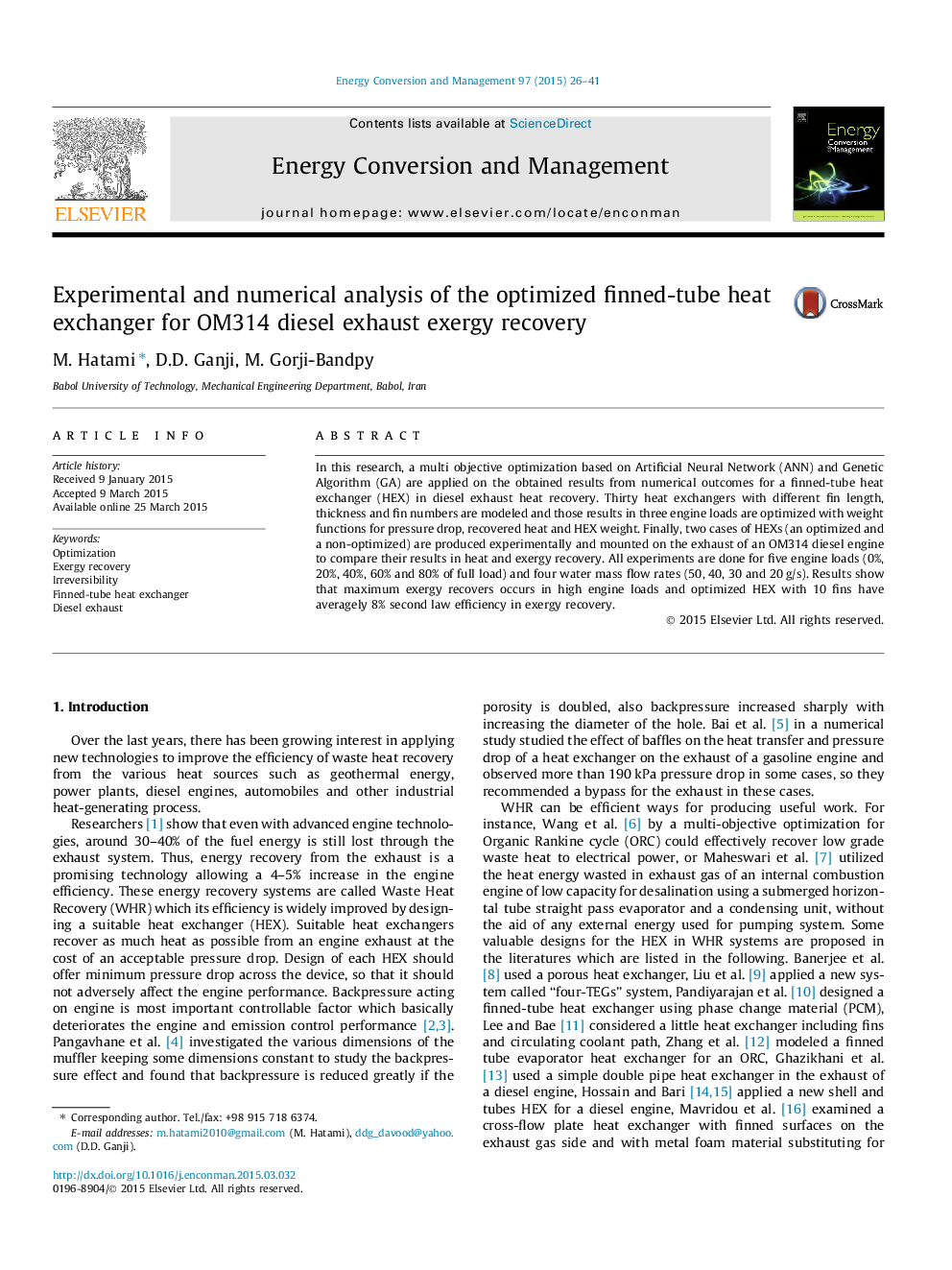| Article ID | Journal | Published Year | Pages | File Type |
|---|---|---|---|---|
| 760578 | Energy Conversion and Management | 2015 | 16 Pages |
•An optimized finned-tube heat exchanger is modeled.•Artificial Neural Networks and Genetic Algorithm are applied.•Exergy recovery from exhaust of a diesel engine is studied.
In this research, a multi objective optimization based on Artificial Neural Network (ANN) and Genetic Algorithm (GA) are applied on the obtained results from numerical outcomes for a finned-tube heat exchanger (HEX) in diesel exhaust heat recovery. Thirty heat exchangers with different fin length, thickness and fin numbers are modeled and those results in three engine loads are optimized with weight functions for pressure drop, recovered heat and HEX weight. Finally, two cases of HEXs (an optimized and a non-optimized) are produced experimentally and mounted on the exhaust of an OM314 diesel engine to compare their results in heat and exergy recovery. All experiments are done for five engine loads (0%, 20%, 40%, 60% and 80% of full load) and four water mass flow rates (50, 40, 30 and 20 g/s). Results show that maximum exergy recovers occurs in high engine loads and optimized HEX with 10 fins have averagely 8% second law efficiency in exergy recovery.
